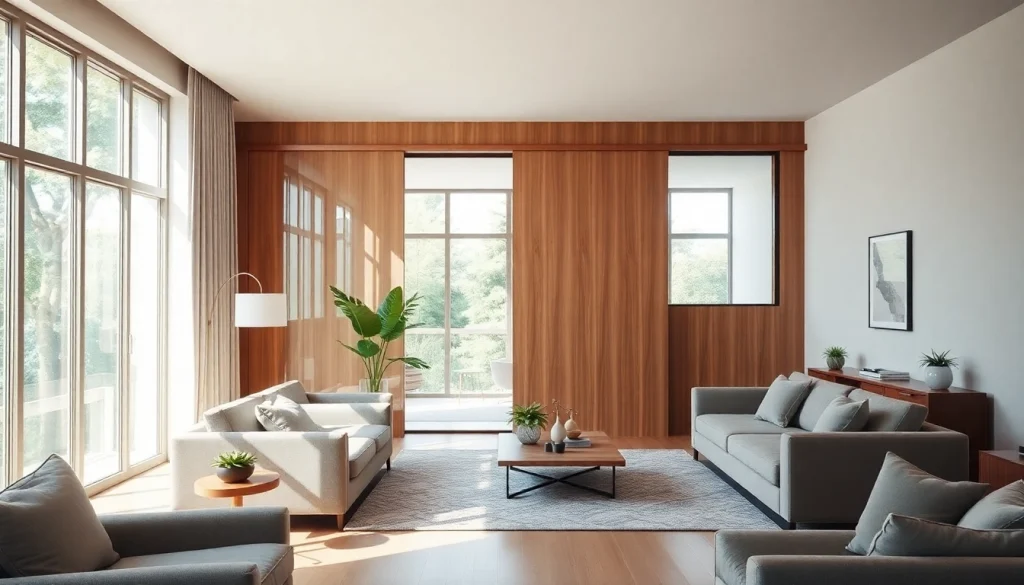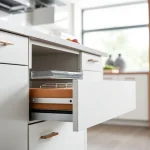Introduction to Sliding Partition Walls
In modern interior design, flexibility and adaptability have become key factors in creating functional spaces. One solution that has gained popularity in various settings, including homes and commercial environments, is the sliding partition wall. These versatile structures provide an innovative approach to space management by allowing users to reconfigure their environments quickly and easily. In this article, we will take a deep dive into the many aspects of sliding partition walls, exploring their benefits, types, installation processes, maintenance, and inspiring design ideas.
What is a Sliding Partition Wall?
A sliding partition wall is a movable barrier that can be adjusted to create flexible spaces within a larger area. Unlike traditional fixed walls, sliding partitions can be opened or closed depending on the user’s needs. They can be made from various materials, including wood, glass, and metal, making them suitable for various interior design styles. These partitions are designed to slide along tracks or rollers, facilitating smooth operation and ease of use.
Benefits of Using Sliding Partition Walls
Sliding partition walls offer numerous advantages:
- Space Efficiency: By allowing for the reconfiguration of space, sliding partitions maximize the utility of a room, transforming it from open to private as needed.
- Cost-Effective: Instead of constructing new walls, which involves significant time and expense, sliding partitions are often more affordable and can be installed without extensive renovations.
- Acoustic Benefits: Many sliding partition walls provide excellent sound insulation, making them ideal for offices, conference rooms, and other environments where privacy is essential.
- Aesthetic Appeal: Sliding walls can be customized in terms of materials, colors, and finishes, enhancing the overall design of a space.
- Easy Installation: Most sliding partition walls come with straightforward installation processes, making them accessible for both professionals and DIY enthusiasts.
Common Applications in Modern Interiors
Sliding partition walls are utilized in various environments, each taking advantage of their flexibility:
- Residential Spaces: Homeowners use sliding partitions to create private areas in open-plan layouts, such as separating a living room from a home office or play area.
- Commercial Settings: Offices often integrate sliding partitions to create meeting rooms or collaborative zones, promoting team interactions while maintaining confidentiality.
- Hospitality Venues: Restaurants and hotels employ sliding walls to adjust capacity based on customer influx, allowing for dynamic dining experiences.
- Educational Institutions: Schools and universities use sliding partitions in classrooms and auditoriums to facilitate different learning environments.
Types of Sliding Partition Walls
Traditional vs. Modern Designs
When it comes to sliding partition walls, there is a range of designs that cater to different tastes and requirements:
- Traditional Designs: These often feature wood or wooden frames with solid panels, suitable for classic interiors. Their durability and timeless aesthetics appeal to those looking for warmth and cohesion in their space.
- Modern Designs: Emphasizing clean lines, minimalist aesthetics, and the use of materials like glass and metal, modern sliding partition walls are perfect for contemporary spaces. They often incorporate innovative track systems that minimize visibility when the wall is fully retracted.
Materials Used for Sliding Partition Walls
The materials chosen for sliding partition walls significantly impact their appearance, durability, and functionality. Common options include:
- Wood: Offers a classic appeal and warmth, ideal for traditional settings.
- Glass: Creates an open, airy feel, preserving light while providing acoustic separation. It is commonly used in modern office designs.
- Metal: Often used for a sleek, industrial look, providing durability and longevity.
- Fabric or Textile: Used for flexible and creative partitions, particularly in event spaces and temporary settings.
Customization Options Available
One of the key benefits of sliding partition walls is the extensive range of customization options available:
- Size and Dimensions: Sliding partitions can be tailored to fit specific spaces, ensuring a perfect fit and maximum utility.
- Color and Finish: Users can select finishes that complement their existing décor, from natural wood grains to bold colors and textures.
- Operational Mechanisms: Options such as manual or motorized sliding systems allow for greater convenience and accessibility.
- Style: From traditional to ultra-modern, the style of the partition can be customized to match the interior theme.
Installation Process of Sliding Partition Walls
Tools Needed for Installation
Whether installing a sliding partition wall as a DIY project or overseeing a professional installation, certain tools are essential:
- Drill and bits
- Stud finder
- Level
- Tape measure
- Screwdriver
- Safety goggles
- Plumb line
Step-by-Step Guide to Installing a Sliding Partition Wall
The installation of sliding partition walls involves several well-defined steps:
- Measure the Area: Ensure you have accurate measurements of the space where the partition will be installed.
- Set Up the Track: Depending on the design, install the track on the ceiling or wall, using a level to ensure it is straight.
- Attach Rollers to the Wall Panel: Secure the rollers to the top of the partition wall according to the manufacturer’s instructions.
- Hang the Partition: Lift the wall panel into position and secure it to the installed track.
- Adjust and Test: Once installed, test the sliding mechanism. Make any necessary adjustments to the alignment.
Professional vs. DIY Installation
Deciding between professional installation and a DIY approach comes down to several factors:
- Expertise: If you have experience with similar installations, a DIY might be feasible. However, professional installers will ensure proper handling and reduce the risk of errors.
- Time: Professionals typically have the tools and experience to complete installations faster, which can be beneficial for busy environments.
- Warranty and Guarantee: Many manufacturers offer warranties if a professional installs the product, ensuring peace of mind regarding the installation and product usage.
Maintenance and Care for Sliding Partition Walls
Regular Upkeep Tips
Maintaining your sliding partition walls is essential for longevity and optimal performance:
- Regularly clean the tracks of debris and buildup to ensure smooth operation.
- Check the rollers and hardware for signs of wear, tightening screws as needed.
- Lubricate moving parts periodically to reduce friction and noise.
Troubleshooting Common Issues
Despite their benefits, sliding partition walls may encounter issues. Here are common problems and their solutions:
- Wall Not Sliding Smoothly: Check the track for obstructions and ensure that rollers are aligned and properly lubricated.
- Doors Getting Stuck: Inspect the roller mechanisms for damage and replace any broken parts if necessary.
- Noise During Operation: Clean and lubricate the track and rollers, or consider replacing worn components to minimize noise.
When to Consult a Professional
If maintenance issues persist or significant repairs are needed, it may be time to call in professionals. Additionally, if the installation involves complex configurations or requires specific tools that you lack, consulting an expert can save time and ensure safety.
Inspiring Ideas for Using Sliding Partition Walls
Innovative Design Concepts
Sliding partition walls can be creatively integrated into various design concepts:
- Multi-functional Spaces: Use sliding partitions to create flexible areas in small apartments, allowing for quick transitions between sleeping, living, and working spaces.
- Artistic Panels: Customize sliding panels with artwork or bold colors to serve as both functional partitions and decorative elements.
- Nature-Inspired Dividers: Incorporate greenery by using sliding glass partitions that allow light while adding a natural touch to the space.
Transforming Spaces with Color and Light
Color can significantly influence the mood and aesthetics of a space. Here’s how to utilize sliding partitions in this context:
- Use Contrasting Colors: Choose sliding partitions in contrasting colors to create visual interest. For example, a bright red partition in a neutral room can serve as a focal point.
- Incorporate Light: Use translucent materials, such as frosted glass, to diffuse light beautifully, enhancing the overall ambiance while maintaining a sense of privacy.
Case Studies of Successful Installations
Looking at real-world applications can provide inspiration. Here are examples of how sliding partition walls have transformed spaces:
- Office Transformation: A tech startup incorporated glass sliding partitions to separate open workspace from meeting rooms, providing acoustic privacy while maintaining an airy feel.
- Home Flexibility: A family redesigned their open living area using wooden sliding partitions to create a home office and guest bedroom, enhancing both functionality and comfort.


